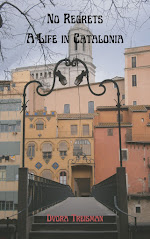Although its point of departure is a collection of netsuke – Japanese carved miniatures – The Hare with Amber Eyes is really the history of a Jewish family that begins in Odessa in the 19th Century, moves on to Paris and Vienna in the 1850s, and eventually to Tokyo and London
At the bottom of the front cover there is a quote from the Sunday Times that says “You have in your hands a masterpiece.” I think this is an accurate assessment. I consider myself lucky to have discovered this book, thanks to an online book group I belong to that dedicates itself to discussions of books related to art.
There are 264 netsuke in the collection. De Waal calls it “It is a very big collection of very small objects”. They were bought in Paris in the 1870s by Charles Ephrussi who later gave them as a wedding present to Victor von Ephrussi, his cousin and de Waal’s great grandfather, who lived in Vienna
Charles Ephrussi was a writer, an art expert, and a patron of Degas and Renoir before they became fashionable and accepted by the art world and the public. He not only commissioned paintings for himself, but encouraged friends of his to do the same.
It was fabulous to learn that Charles was one of the models in Renoir’s painting The Luncheon of the Boating Party. I’ve read Susan Vreeland’s entertaining book of the same title – a historical fiction that imagines how Renoir gathered together all his subjects at the restaurant on the Loire . Charles is towards the back, wearing a top hat and talking with the owner’s son. Of course, I didn’t realize who Charles Ephrussi was when I read that book. So what fun when I was reading this one to put two and two together and learn more about who that figure in the top hat really was. I love it when you didn’t even realize there was a puzzle, and suddenly the pieces fit together.
On the other hand, it was very disillusioning to read that when social conditions began to change in France
The Hare with Amber Eyes is one of several excellent books I’ve recently that deal directly or indirectly with aspects of modern Jewish history.
I enjoyed Outwitting History by Aaron Lansky so much that I wrote about it recently in two blog posts titled Roots and Roots 2. My friend Shellie had told me about that book. The point of departure in Outwitting History is the rescue of over a million Yiddish books, and through the various personal stories and vignettes ends up telling a version of modern Jewish history.
In Outwitting History, there was much talk of socialism, workers’ unions, leftists, intellectuals, and working class people. I don’t think the word socialism appears even once in The Hare with Amber Eyes. The Hare’s protagonists are the Jewish elite of Europe – a titled family with wealth on par with the Rothchilds. They spoke French, German, English, and Russian and deliberately spoke no Yiddish.
The Hare is the story of the Ephrussi family from Odessa
Portrait of Dr. Gachet by Cynthia Saltzman, ostensibly a kind of biography of the painting by van Gogh told of the various owners of the painting and the conditions of the art world during the period of time – just a little more than a century – that the books covers until the painting was bought by a Japanese businessman and taken to Tokyo in 1990. Until that time, most of the owners, and the family that had owned it for more than 50 years, were Jewish. Not meant to be a book about modern Jewish history, in a way it is.
A Tale of Love and Darkness is another beautiful book, written by Amos Oz, an Israeli, whose forebear had come to Israel from Odessa Odessa Odessa family that went to live in Vienna and Paris Odessa who immigrated to Israel
The netsuke collection ends up (before being inherited by the author) with de Waal’s great-uncle Iggie, a homosexual who left Vienna for New York and Los Angeles where he became a designer, and eventually settled in Tokyo
Then, finally, there is Stefan Zweig’s The World ofYesterday which I am almost finished reading. Zweig was a Viennese Jew, a successful writer, playwright, and translator who lived through the First World War, committing suicide before the end of the Second. Also a Jewish history, it is more broadly an intellectual history of 19th Century Europe.
Of all these books, I think A Tale of Love and Darkness and The Hare with Amber Eyes are the two that stand out for me although I think the others are also excellent and I would recommend them all.










No comments:
Post a Comment